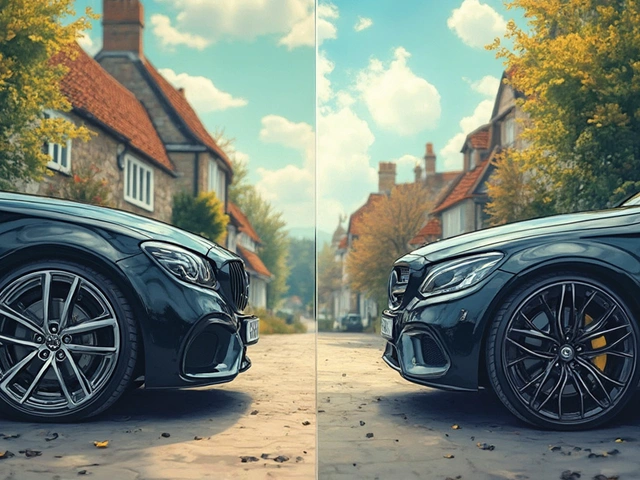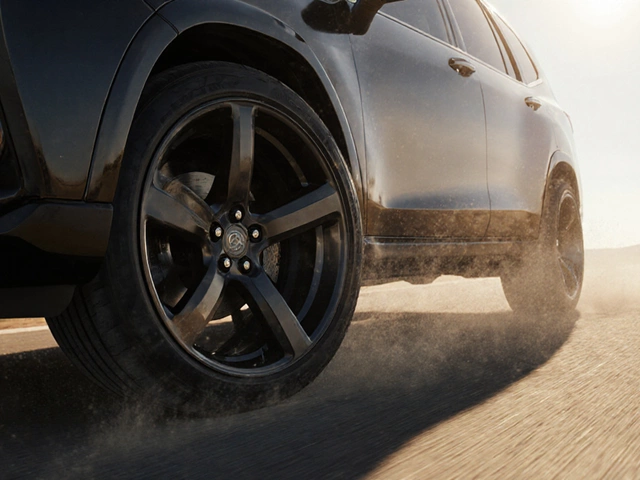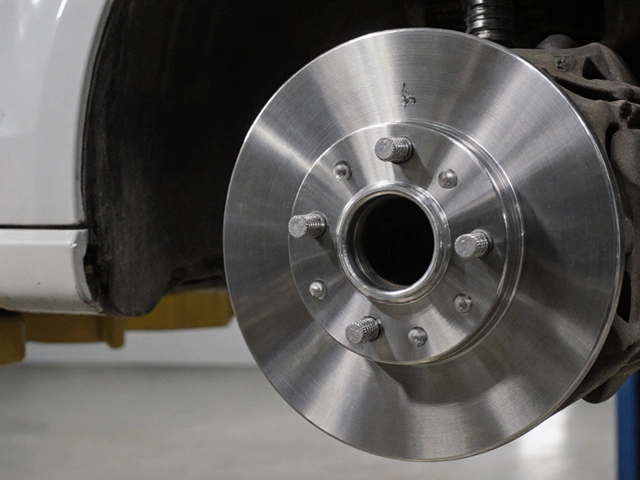Diving into the world of kit cars feels like stepping into a tinkerer's dream. These are the cars you build yourself, piece by piece, and breathe life into. But, can you actually drive these custom creations on the road? Well, it's not that simple.
First off, kit cars fall into a unique category when it comes to legal driving. You can't just take your ride out for a spin without meeting certain road regulations. This varies a bit depending on where you're located, but some rules are pretty standard.
Before you even think about hitting the streets, your kit car needs to pass some strict safety checks. This means everything from ensuring the brakes work properly to installing the correct headlights. Neglecting these requirements can land you in trouble.
- Understanding Kit Cars
- Legal Requirements to Drive
- Registration Process
- Insurance Insights
- Avoiding Common Pitfalls
- Tips for a Smooth Ride
Understanding Kit Cars
If you've ever dreamed of building your own car, kit cars are the way to go. These are typically sold as a set of parts, allowing enthusiasts to construct a vehicle from the ground up. But what exactly makes a kit car, and why are they so fascinating?
Kit cars generally replicate the appearance of classic, vintage, or even some exotic models. They're popular among car enthusiasts who have the vision to create a custom vehicle.
Components of a Kit Car
These kits might vary in complexity, but they all consist of several essential components:
- Chassis: The backbone of your car, which might be an existing car frame or one that you build.
- Body: Typically made from fiberglass or other lightweight materials, giving the car its distinctive look.
- Mechanical Parts: Including the engine, transmission, and drivetrain which often come from other donor vehicles.
The beauty of kit cars is their versatility. Enthusiasts can modify engines, tweak designs, and even upgrade interiors. It’s all about creating something unique.
“Kit cars provide an unparalleled blend of hands-on building and creative expression. They embody the spirit of automotive innovation.” – Auto Enthusiast Magazine
Why Kit Cars?
For many, the appeal lies in the ability to create a personalized ride on a possibly more feasible budget than purchasing a high-end vehicle. It’s also a chance to learn about car mechanics and engineering firsthand.
However, building a kit car isn't for the faint-hearted. It requires patience, technical know-how, and a willingness to overcome mechanical challenges.
Understanding the intricacies of kit cars not only enhances the building experience but also prepares you for the road ahead, literally and figuratively. If you're willing to dedicate the time and effort, the payoff can be a unique car that perfectly matches your vision.
Legal Requirements to Drive
So, you want to drive your kit car on the road? Fantastic! But before you hit the pavement, you’ve got a few legal hoops to jump through. Kit cars can be driven on public roads, but they must adhere to the same rules and regulations as any factory-built vehicle.
Registering Your Kit Car
The first step is registering your vehicle. Each country, and sometimes even different states within a country, has its own set of rules. You’ll usually need proof that your kit car meets safety and emissions standards. This could mean gathering documents that certify parts like your engine or chassis pass certain inspections. In some places, a special type of registration for homemade vehicles might be available.
Safety and Emissions Standards
You can’t skip out on these—your kit car needs to be road-worthy. That means it might need to pass a roadworthiness test, which checks things like brakes, steering, and suspension. Emissions are next on the list. Your car has to comply with emissions standards, which might involve having a certified or pre-approved engine.
| Country | Emission Standards |
|---|---|
| USA | EPA compliance |
| UK | IVA standards |
| Australia | ADR requirements |
Insurance Matters
Insurance can get a bit more complicated with kit cars. Standard vehicle insurance may not cover the unique aspects of your creation. Instead, look for insurers that offer specialized kit car insurance policies, which consider the unique value of your homemade beauty.
VIN and Title
Every car needs a Vehicle Identification Number (VIN). For most kit cars, you’ll have to apply for a new one. This process can take time, so be prepared for some paperwork and patience. Without it, you can’t legally drive or sell your car.
Stick with these guidelines, and you're off to a good start! Navigating the legal maze of driving a kit car can seem tricky, but armed with the right info, you'll be cruising along in no time.
Registration Process
Getting your kit car road-ready involves more than just screwing in the last bolt; it's about getting through the registration. This isn't just bureaucratic fluff—it’s about making sure your creation is safe for you and everyone else on the road.
Gathering the Essentials
First things first, gather all the necessary documents. You’ll need the build receipt, which is like your kit car's birth certificate. Have proof of purchase ready for all major components, especially the engine. If the parts are sourced from different places, keep every receipt. Trust me, it saves headaches.
Inspection Time
Next up is the inspection phase. Your kit car needs to meet certain safety and emissions standards to hit the roads legally. In Australia, this means making sure you're compliant with the Australian Design Rules (ADR). This can be a bit of a maze, but vital.
- Schedule an inspection with the relevant authority in your state.
- Ensure the vehicle identification number (VIN) is clear and in the right place.
- Prepare for potential modifications if anything is out of compliance.
Completing the Paperwork
With the inspection done, it's time to tackle the paperwork. Fill out your application for registration, ensuring every box is ticked. If your state requires it, you'll also need to show proof of insurance—more on that later. Use this time to double-check that all your documents are up-to-date and reflect any changes made during the build.
Paying the Fees
Don't forget about the fees involved. Prices can vary depending on your specific situation and location, but be prepared to pay for things like registration fees, number plates, and other admin costs. For some budget-friendly tips, checking community forums where other kit car owners share insights can be helpful.
| Fee Type | Est. Cost (AUD) |
|---|---|
| Registration Fee | $150 - $200 |
| Inspection Fee | $100 - $150 |
| Plates | $50 - $100 |
Once all of this is sorted, you’re pretty much golden. With the registration sorted, you can finally revel in the joy of cruising down the highway, your labor of love officially part of the road ruling elite!

Insurance Insights for Kit Cars
Insuring a kit car isn't quite the same as getting a policy for your typical vehicle. With their custom nature, insurance companies take a different approach when underwriting these unique rides. Let's explore what you need to know.
Understanding Kit Car Insurance
One of the first things you'll notice is that not all insurers cover kit cars. You'll likely need to seek out specialty providers who have experience handling these cases. The main reason? Kit cars, being mostly hand-built, don't have standardized parts or build processes, making risk assessment more complex for traditional insurers.
Agreed Value vs. Market Value
When it comes to the value of your ride, kit car insurance often revolves around the concept of 'agreed value.' This means that you and the insurer agree on how much the car's worth at the start of the policy, considering your time, effort, and the quality of the build.
In contrast, most regular cars are insured for 'market value,' which is the amount it would fetch on the market at the time of a claim. Given the custom nature of kit cars, agreed value provides more security.
Factors Affecting Premiums
Several factors can influence your kit car insurance premiums:
- Vehicle specifications
- Driver's age and experience
- Daily usage versus show or weekend drives
- Storage conditions – indoor vs. outdoor
- Additional safety features installed
Each of these factors can either increase or decrease what you pay annually.
Useful Tip
Consider joining a kit car club or community. Some insurance companies offer discounts to members of these groups, plus it's a great way to share tips and insights.
Sample of Insurer Requirements
| Requirement | Detail |
|---|---|
| Pictures of the Build | Insurers may want visual proof of the build quality |
| Engineer's Report | Professional assessment of structural integrity |
| Mileage Restrictions | Policies might cap how far you can drive annually |
Getting your kit car insured is a crucial step before you hit the road. Understanding these insights can make the process smoother and help you find the best coverage for your pride and joy.
Avoiding Common Pitfalls
Alright, so you're thinking about cruising around in that shiny kit car you've meticulously assembled. But before you roll it out of the garage, let's talk about avoiding some common hiccups that many DIY enthusiasts overlook.
Understanding Emissions Standards
One major hurdle with turning a kit car into a road legal vehicle is meeting emissions standards. It's crucial to remember that, just like any other car, your kit car must comply with pollution control norms. Failure to meet these can prevent you from getting that coveted roadworthy certificate.
Pain Points in Insurance
Insurance can be a bit tricky with kit cars. Many standard insurers shy away from covering them, so it's essential to shop around. Look for companies specializing in classic or customized cars; they tend to offer more compatible policies. Remember, without the right insurance, you might find yourself in a tough spot if anything goes wrong.
Documentation: Keep It Handy
Never underestimate the power of proper documentation. Whether it's the invoices for parts or certificates verifying compliance with safety standards, keeping a neat file is always wise. This paper trail can be vital when registering your vehicle or ironing out any legal bumps in your way.
Final Assembly Checks
- Double-check all mechanical linkages for secure fittings.
- Ensure the electrical systems function correctly.
- Test your brakes thoroughly—never skip this!
Round off assembly by calling in a professional for a once-over. It can be the extra set of eyes you need to ensure everything's in place.
A Quick Glance at Common Failures
Take a look at this:
| Component | Common Issues |
|---|---|
| Brakes | Inconsistent pressure, fluid leaks |
| Electrical System | Wiring faults, short circuits |
| Steering | Loose connections, misalignment |
Regular checks and preventive maintenance can save you from these headaches long-term.
Tips for a Smooth Ride
Getting your kit car ready for the road is just the first part. Once you’re all set, you’ll want to ensure you’re enjoying the ride without any hitches. Here are some handy tips to keep everything running smoothly.
Regular Maintenance Checks
Don’t wait for something to go wrong before you check under the hood. Make a habit of regular maintenance checks, kind of like a doctor’s visit for your car. This includes oil changes, brake inspections, and checking fluid levels.
Engine performance, especially in custom-built cars, can vary a lot. Keeping everything in tip-top shape not only ensures safety but also keeps the fun factor high.
Keep It Clean
Believe it or not, regular cleaning isn’t just about looks. Dirt and grime can affect operational parts. Plus, a clean car just feels better to drive. Make sure the windshield and all lights are spotless; it’s a simple way to maintain visibility and safety.
Join a Kit Car Community
There's a wealth of knowledge in forums and local meetup groups dedicated to kit car enthusiasts. Whether it’s troubleshooting an engine quirk or upgrading your system, these communities are invaluable.
Drive Smart
Driving a kit car can be a unique experience. The power and handling might differ from your regular vehicles. Take the time to get used to its quirks and be cautious, especially in bad weather or unfamiliar roads. Consider taking your car to a track day event for getting to know your ride better.
Fuel Efficiency
While your kit might not be a hybrid, there's still room to be smart about fuel. Regular servicing helps maintain fuel efficiency. Plus, smoother driving with less rapid acceleration is kinder to both your car and wallet.
Enjoying your passion project shouldn’t be stressful. Follow these tips, and you'll keep your ride as smooth as the first day you set out on the road.






